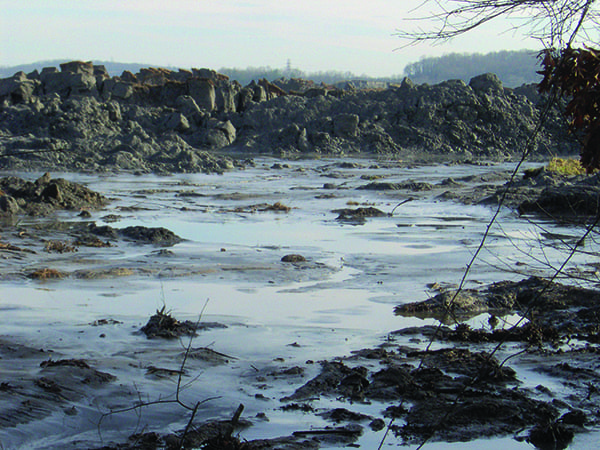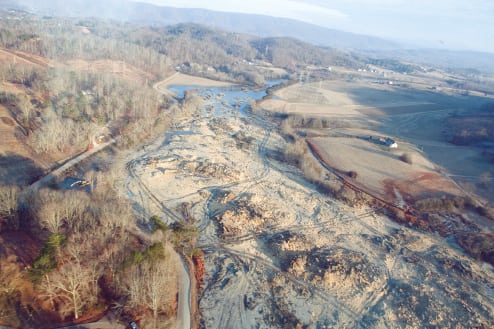The Tennessee Valley Authority (TVA) listed costs and time among several reasons for its preferred method to close its coal ash impoundments in place, rather than by removal, but the move has come under fire by environmental groups.
The federally owned corporation earlier this month released a final environmental impact statement (EIS) to support its goal to eliminate all wet coal combustion residual (CCR) storage at its coal plants by closing CCR impoundments across the TVA system. That measure will help the TVA meet new criteria and schedules for the management and closure of CCR facilities under the Environmental Protection Agency’s (EPA’s) CCR rule, it said.
The TVA explained that it has historically “managed storage” of CCR materials in ash impoundments or landfills. But after a dike at its Kingston coal-fired facility catastrophically failed in December 2008—unleashing the biggest coal ash spill in U.S. history—the company has changed tactics.
Stemming from a plan outlined in 2009, the company now wants to convert wet storage of CCRs to dry storage and close its ash impoundments on a project-by-project basis.
These ash ponds, many of which are decades old, vary in size from 10 acres to nearly 400 acres. The larger ones contain millions of cubic yards of CCR materials. The TVA’s coal fleet, for example, produced about 3.9 million tons of CCRs in 2015, about 34% of which was used or marketed. The rest was stored at the TVA’s 13 active landfills and impoundments in Tennessee, Alabama, and Kentucky.
The EIS, finalized this month, assessed the environmental effects of two specific primary ash impoundment closure methods for eight facilities. The first method, closure-in-place, involves dewatering the impoundment, stabilizing the CCR, and installing a cover system to keep new sources of water from mixing with the CCR material. The second method, closure-by-removal, entails dewatering and excavating the CCR material, transporting it to a lined landfill, reshaping the site, and then filling it with borrow material.
It deemed closure-in-place “more environmentally beneficial” than closure-by-removal, largely because the later method has “significantly greater transportation-related impacts,” and would take longer. Closure-by-removal is also more costly—”significantly more costly,” even, depending on the volume of CCR material to be moved—than closure-in-place, the TVA said.
Costs for closure-in-place range from between $3.5 million to $200 million, it said. That compares to costs for closure-by-removal of between $20 million to $2.3 billion, if CCRs are transported by truck, and between $23 million to $2.1 billion, if transported by train.
Meanwhile, both methods reduce groundwater contamination—though it noted closure-by-removal reduces groundwater contamination more than closure-in-place over the long term where CCR is in the groundwater.
The EIS also underscores that based on technical studies to support its CCR Rule, the EPA observed, “that most facilities would be closed in place because of the difficulty of removing CCRs and notably higher costs and it assumed in its regulatory impact analysis that all facilities would be closed in place.”
The TVA will continue to accept comments on its final EIS until July 9, but its preferred closure-in-place method has already ignited a firestorm.
Environmental groups have widely criticized the corporate agency for moving forward with a plan they say simply leaves “millions of tons of its coal ash in place to continue polluting indefinitely into groundwater and drinking water sources for communities” across Tennessee, Alabama, and Kentucky. The TVA’s own monitoring data shows that its coal ash sites are polluting groundwater, they posit.
One of the measure’s most vocal critics, the Southern Environmental Law Center (SELC), noted that utilities in North Carolina and South Carolina are cleaning up sites by excavating coal ash ponds to dry, lined storage away from waterways.
“We’re incredulous that TVA, the poster child for coal ash mismanagement thanks to the Kingston disaster, continues to push forward blindly with a plan that ensures ongoing pollution for decades to come,” said Amanda Garcia, staff attorney in SELC’s Nashville Office in a statement on June 10.
—Sonal Patel, associate editor (@POWERmagazine, @sonalcpatel)
















